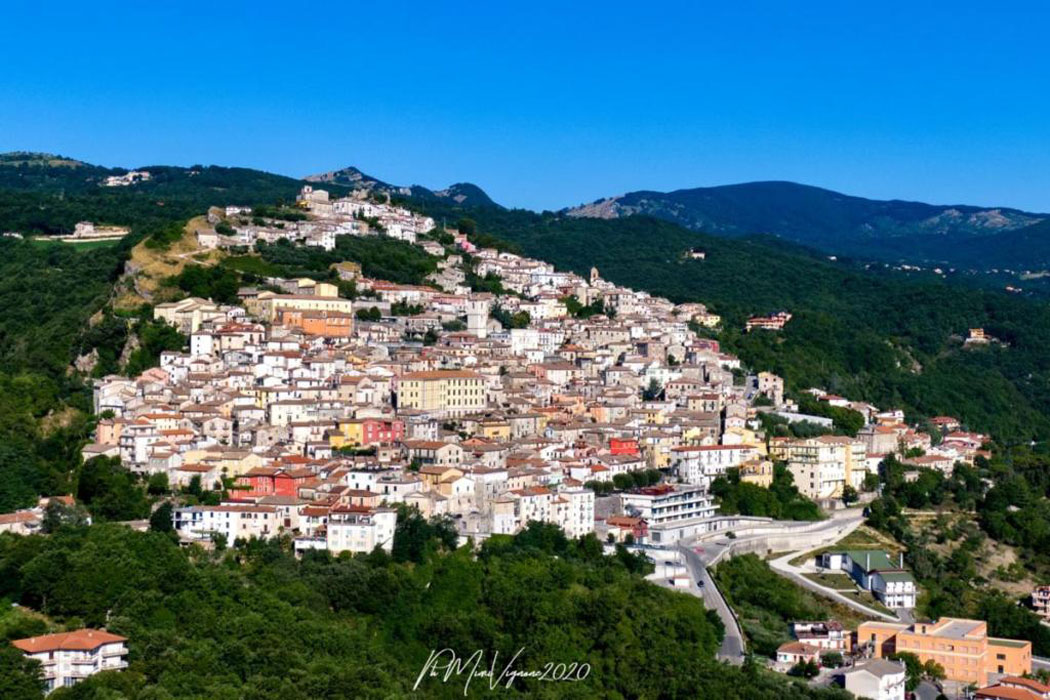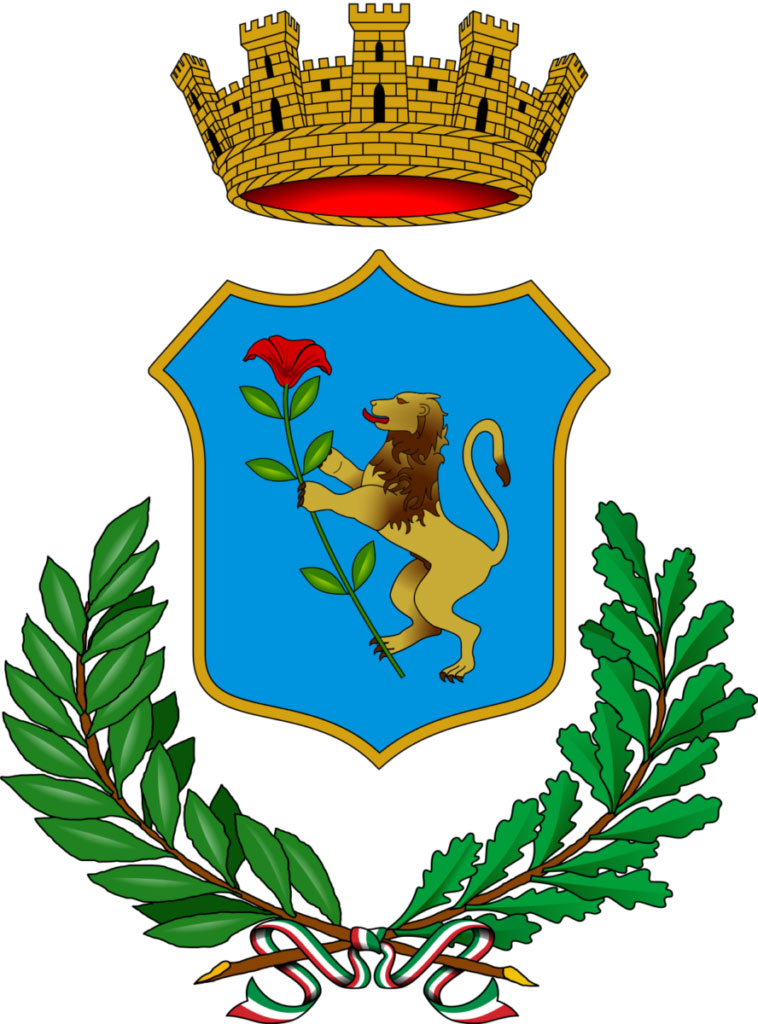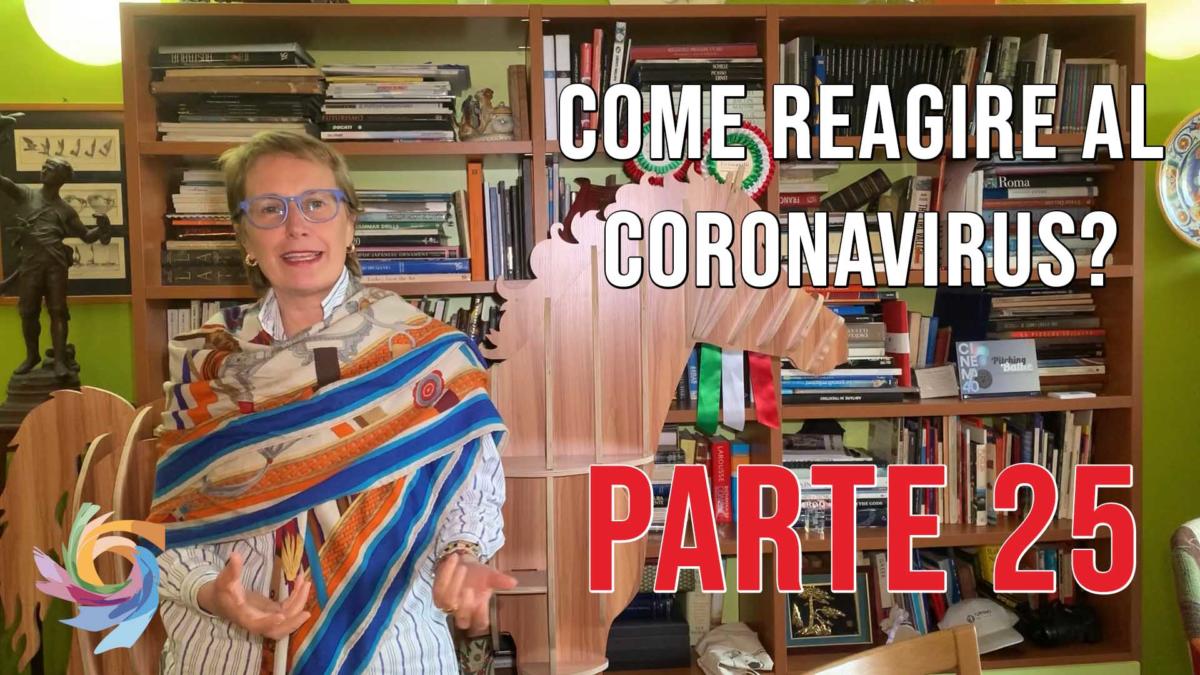

Morcone is one of the most beautiful towns in the Sannio area, in the province of Benevento, in the heart of the Campania Apennines, on the border between Campania and Molise.
It stands on the steep slopes of Mount Mucre, on the southern slope of the Matese chain, and overlooks the splendid valley of the Tammaro river which ends right at the town giving the vision of a wide hilly landscape.
The historic centre of the village has remained unchanged at one time and is characteristic for its tangle of alleys and inaccessible stairways, not only to cars but even to the wheels of wagons, which make it look like a crib.
On each side of the town two streams flow, the San Marco stream and the Rio Vivo, which lap the town and set its limits, almost forming a small island and which have been its strength over the years.
It is said that the origins of Morcone are linked to another ancient and mysterious city: the famous Murgantia, mentioned by Tito Livio in his book "Ab Urbe Condita" which tells the story of Rome.
The city was inhabited by the proud and warlike people of the Samnites and was conquered by the Romans only during the 3rd Samnite war. Several remains of the ancient settlement remain, such as the polygonal walls which were then used as a base for the walls of the medieval castle.
After the fall of the Roman Empire, the population took refuge on a hill to escape the Barbarians giving rise to the current village of Morcone. The initial fort then became a castle surrounded by fortified walls with six access gates. Porta San Marco is still in existence.
Marcone was then dominated by the Lombards and became part of the Duchy of Benevento, also called Langobardia Minor, which for centuries ruled central-southern Italy. It is mentioned for the first time in 776 AD. when it became the seat of a Lombard gastaldato, that is, a territorial administration endowed with civil, judicial and military powers, conferred by the king. Morcone administered justice within the Principality of Salerno.
It is said that during the 9th century, the Byzantine emperor Leo the Savio established a Greek rite diocese under the direct dependence of the Patriarch of Constantinople, but with the advent and Norman domination, the diocese was suppressed by the Church of Rome. In fact, the Normans had been called by the papacy to spread the Latin rite and abolish the Orthodox one.
It stands on the steep slopes of Mount Mucre, on the southern slope of the Matese chain, and overlooks the splendid valley of the Tammaro river which ends right at the town giving the vision of a wide hilly landscape.
The historic centre of the village has remained unchanged at one time and is characteristic for its tangle of alleys and inaccessible stairways, not only to cars but even to the wheels of wagons, which make it look like a crib.
On each side of the town two streams flow, the San Marco stream and the Rio Vivo, which lap the town and set its limits, almost forming a small island and which have been its strength over the years.
It is said that the origins of Morcone are linked to another ancient and mysterious city: the famous Murgantia, mentioned by Tito Livio in his book "Ab Urbe Condita" which tells the story of Rome.
The city was inhabited by the proud and warlike people of the Samnites and was conquered by the Romans only during the 3rd Samnite war. Several remains of the ancient settlement remain, such as the polygonal walls which were then used as a base for the walls of the medieval castle.
After the fall of the Roman Empire, the population took refuge on a hill to escape the Barbarians giving rise to the current village of Morcone. The initial fort then became a castle surrounded by fortified walls with six access gates. Porta San Marco is still in existence.
Marcone was then dominated by the Lombards and became part of the Duchy of Benevento, also called Langobardia Minor, which for centuries ruled central-southern Italy. It is mentioned for the first time in 776 AD. when it became the seat of a Lombard gastaldato, that is, a territorial administration endowed with civil, judicial and military powers, conferred by the king. Morcone administered justice within the Principality of Salerno.
It is said that during the 9th century, the Byzantine emperor Leo the Savio established a Greek rite diocese under the direct dependence of the Patriarch of Constantinople, but with the advent and Norman domination, the diocese was suppressed by the Church of Rome. In fact, the Normans had been called by the papacy to spread the Latin rite and abolish the Orthodox one.
Read More
Morcone is one of the most beautiful towns in the Sannio area, in the province of Benevento, in the heart of the Campania Apennines, on the border between Campania and Molise.
It stands on the steep slopes of Mount Mucre, on the southern slope of the Matese chain, and overlooks the splendid valley of the Tammaro river which ends right at the town giving the vision of a wide hilly landscape.
The historic centre of the village has remained unchanged at one time and is characteristic for its tangle of alleys and inaccessible stairways, not only to cars but even to the wheels of wagons, which make it look like a crib.
On each side of the town two streams flow, the San Marco stream and the Rio Vivo, which lap the town and set its limits, almost forming a small island and which have been its strength over the years.
It is said that the origins of Morcone are linked to another ancient and mysterious city: the famous Murgantia, mentioned by Tito Livio in his book "Ab Urbe Condita" which tells the story of Rome.
The city was inhabited by the proud and warlike people of the Samnites and was conquered by the Romans only during the 3rd Samnite war. Several remains of the ancient settlement remain, such as the polygonal walls which were then used as a base for the walls of the medieval castle.
After the fall of the Roman Empire, the population took refuge on a hill to escape the Barbarians giving rise to the current village of Morcone. The initial fort then became a castle surrounded by fortified walls with six access gates. Porta San Marco is still in existence.
Morcone was then dominated by the Lombards and became part of the Duchy of Benevento, also called Langobardia Minor, which for centuries ruled central-southern Italy. It is mentioned for the first time in 776 AD. when it became the seat of a Lombard gastaldato, that is, a territorial administration endowed with civil, judicial and military powers, conferred by the king. Morcone administered justice within the Principality of Salerno.
It is said that during the 9th century, the Byzantine emperor Leo the Savio established a Greek rite diocese under the direct dependence of the Patriarch of Constantinople, but with the advent and Norman domination, the diocese was suppressed by the Church of Rome. In fact, the Normans had been called by the papacy to spread the Latin rite and abolish the Orthodox one.
It stands on the steep slopes of Mount Mucre, on the southern slope of the Matese chain, and overlooks the splendid valley of the Tammaro river which ends right at the town giving the vision of a wide hilly landscape.
The historic centre of the village has remained unchanged at one time and is characteristic for its tangle of alleys and inaccessible stairways, not only to cars but even to the wheels of wagons, which make it look like a crib.
On each side of the town two streams flow, the San Marco stream and the Rio Vivo, which lap the town and set its limits, almost forming a small island and which have been its strength over the years.
It is said that the origins of Morcone are linked to another ancient and mysterious city: the famous Murgantia, mentioned by Tito Livio in his book "Ab Urbe Condita" which tells the story of Rome.
The city was inhabited by the proud and warlike people of the Samnites and was conquered by the Romans only during the 3rd Samnite war. Several remains of the ancient settlement remain, such as the polygonal walls which were then used as a base for the walls of the medieval castle.
After the fall of the Roman Empire, the population took refuge on a hill to escape the Barbarians giving rise to the current village of Morcone. The initial fort then became a castle surrounded by fortified walls with six access gates. Porta San Marco is still in existence.
Morcone was then dominated by the Lombards and became part of the Duchy of Benevento, also called Langobardia Minor, which for centuries ruled central-southern Italy. It is mentioned for the first time in 776 AD. when it became the seat of a Lombard gastaldato, that is, a territorial administration endowed with civil, judicial and military powers, conferred by the king. Morcone administered justice within the Principality of Salerno.
It is said that during the 9th century, the Byzantine emperor Leo the Savio established a Greek rite diocese under the direct dependence of the Patriarch of Constantinople, but with the advent and Norman domination, the diocese was suppressed by the Church of Rome. In fact, the Normans had been called by the papacy to spread the Latin rite and abolish the Orthodox one.










Follow us